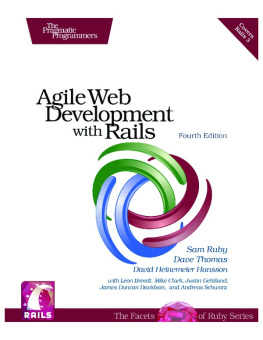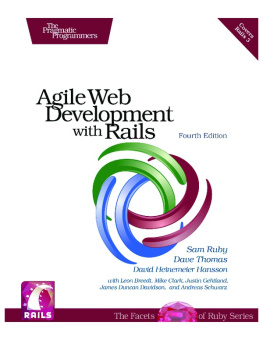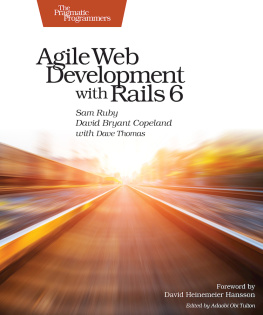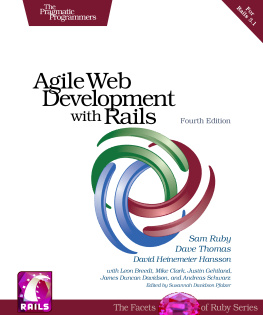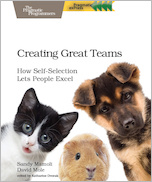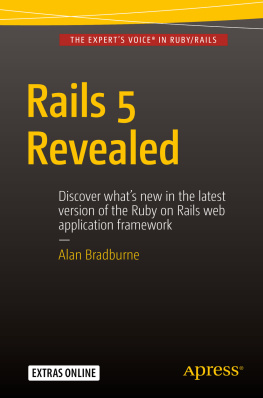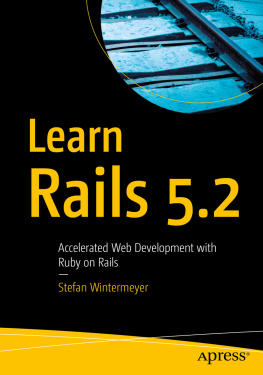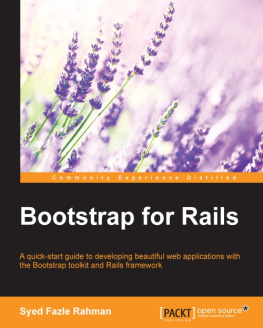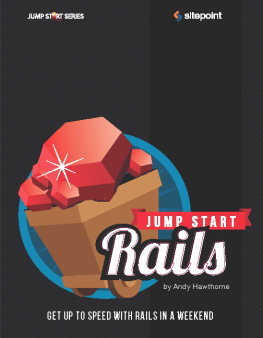Sam Ruby - Agile Web Development with Rails 4
Here you can read online Sam Ruby - Agile Web Development with Rails 4 full text of the book (entire story) in english for free. Download pdf and epub, get meaning, cover and reviews about this ebook. year: 2013, publisher: Pragmatic Bookshelf, genre: Computer. Description of the work, (preface) as well as reviews are available. Best literature library LitArk.com created for fans of good reading and offers a wide selection of genres:
Romance novel
Science fiction
Adventure
Detective
Science
History
Home and family
Prose
Art
Politics
Computer
Non-fiction
Religion
Business
Children
Humor
Choose a favorite category and find really read worthwhile books. Enjoy immersion in the world of imagination, feel the emotions of the characters or learn something new for yourself, make an fascinating discovery.
- Book:Agile Web Development with Rails 4
- Author:
- Publisher:Pragmatic Bookshelf
- Genre:
- Year:2013
- Rating:5 / 5
- Favourites:Add to favourites
- Your mark:
Agile Web Development with Rails 4: summary, description and annotation
We offer to read an annotation, description, summary or preface (depends on what the author of the book "Agile Web Development with Rails 4" wrote himself). If you haven't found the necessary information about the book — write in the comments, we will try to find it.
Rails just keeps on changing. Both Rails 3 and 4, as well as Ruby 1.9 and 2.0, bring hundreds of improvements, including new APIs and substantial performance enhancements. The fourth edition of this award-winning classic has been reorganized and refocused so its more useful than ever before for developers new to Ruby and Rails.
Rails 4 introduces a number of user-facing changes, and the ebook has been updated to match all the latest changes and new best practices in Rails. This includes full support for Ruby 2.0, controller concerns, Russian Doll caching, strong parameters, Turbolinks, new test and bin directory layouts, and much more.
Ruby on Rails helps you produce high-quality, beautiful-looking web applications quickly. You concentrate on creating the application, and Rails takes care of the details.
Tens of thousands of developers have used this award-winning book to learn Rails. Its a broad, far-reaching tutorial and reference thats recommended by the Rails core team. If youre new to Rails, youll get step-by-step guidance. If youre an experienced developer, this book will give you the comprehensive, insider information you need.
Rails has evolved over the years, and this book has evolved along with it. We still start with a step-by-step walkthrough of building a real application, and in-depth chapters look at the built-in Rails features. This edition now gives new Ruby and Rails users more information on the Ruby language and takes more time to explain key concepts throughout. Best practices on how to apply Rails continue to change, and this edition keeps up. Examples use Concerns, Russian Doll caching, and Turbolinks, and the book focuses throughout on the right way to use Rails. Additionally, this edition now works on Ruby 2.0, a new release of Ruby with substantial functional and performance improvements.
This edition is for Rails4.0 and beyond.
Sam Ruby: author's other books
Who wrote Agile Web Development with Rails 4? Find out the surname, the name of the author of the book and a list of all author's works by series.


